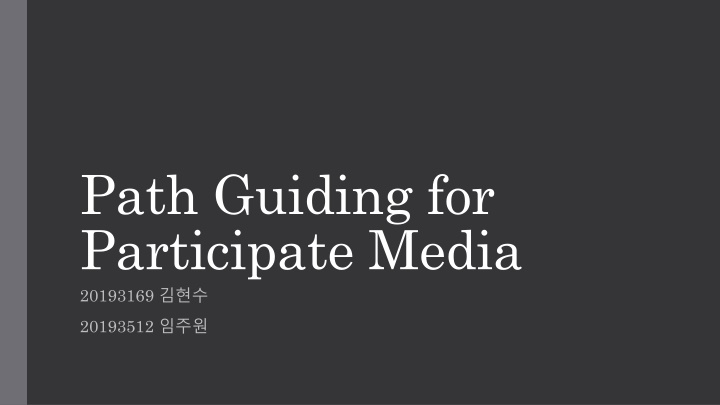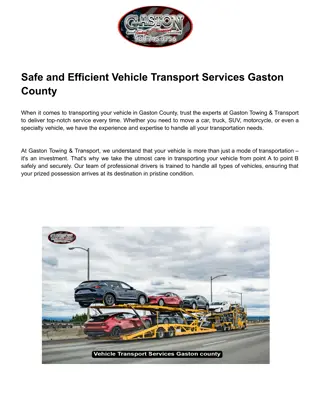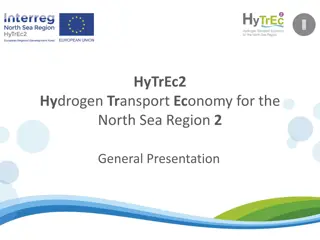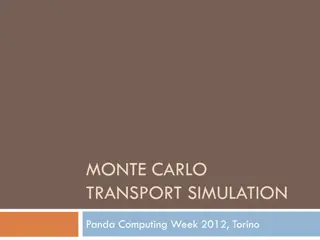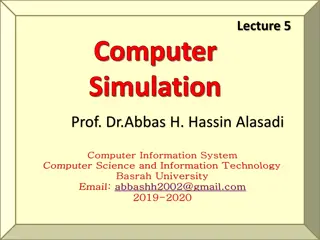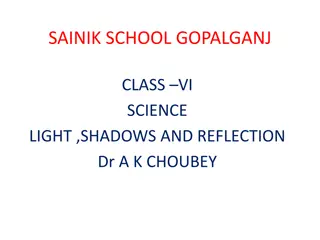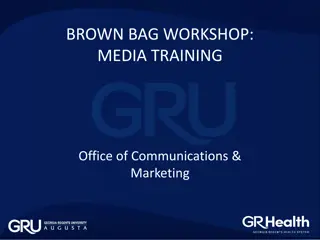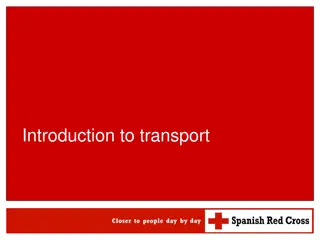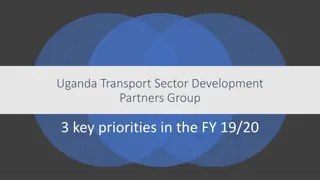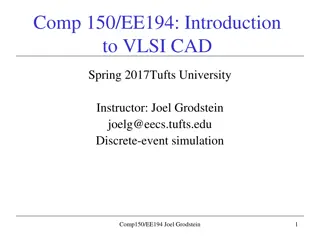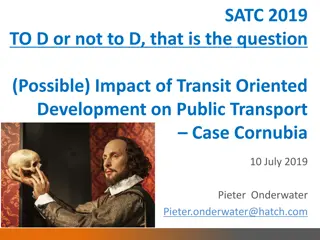Efficient Light-Transport Simulation in Participate Media
This content delves into practical path guiding techniques for efficient light-transport simulation in participate media, focusing on exploring accelerating techniques to overcome challenges posed by voxel data access costs and high albedo volumes. The proposed approach involves using machine learning techniques for learning distance and directional samples in rendering. Key elements include the use of an adaptive spatio-directional hybrid data structure called SD-tree, iterative improvement of the incident radiance field, and the concept of incident radiance field sequence for accelerated convergence. Practical implementation and benefits are discussed based on research presented in the Eurographics Symposium on Rendering (2017).
Download Presentation

Please find below an Image/Link to download the presentation.
The content on the website is provided AS IS for your information and personal use only. It may not be sold, licensed, or shared on other websites without obtaining consent from the author.If you encounter any issues during the download, it is possible that the publisher has removed the file from their server.
You are allowed to download the files provided on this website for personal or commercial use, subject to the condition that they are used lawfully. All files are the property of their respective owners.
The content on the website is provided AS IS for your information and personal use only. It may not be sold, licensed, or shared on other websites without obtaining consent from the author.
E N D
Presentation Transcript
Path Guiding for Participate Media 20193169 20193512
Introduction Participate media Includes cloud, smoke, liquid etc.
Purpose We want to explore accelerating technique for light-transport simulation in participate media. High cost of accessing voxel data and high-albedo of volumes make challenge for simple MC methods. There are machine learning technique to learn distance and directional samples proposed for surface rendering. What if to apply the sampling technique to participate media?
Practical path guiding for efficient light-transport simulation Approximate the representation of scene s incident radiance field from learning. Proposed adaptive spatio-directional hybrid data structure, SD-tree. This is BSDF term Rendering equation ?0?,?0= ?? ?,?0+ ? ?,? ???,?0,? cos ?? This term will be approximated by learning Muller, T., Gross, M., Novak, J.: Practical path guiding for efficient light-transport simulation. In: Proceedings of the Eurographics Symposium on Rendering (2017)
PPT slide Jan Novaks homepage : http://drz.disneyresearch.com/~jnovak/publications/PathGuide/index.html
Practical path guiding for efficient light-transport simulation Spatio-directional tree (SD-tree) consist of two level tree. Binary tree that partitions the 3D space domain of the light field Quadtree that partition the 2D directional domain of the light field Muller, T., Gross, M., Novak, J.: Practical path guiding for efficient light-transport simulation. In: Proceedings of the Eurographics Symposium on Rendering (2017)
Practical path guiding for efficient light-transport simulation Incident radiance field L will be improved iteratively: We double the number of samples across iteration Let incident radiance field sequence L1, L2, , Lk. Lk is estimated by combining Lk-1 and BSDF via multiple importance sampling. This accelerates the convergence of Lk which will be used as ? ?,? . Rendering equation ?0?,?0= ?? ?,?0+ ? ?,? ???,?0,? cos ?? Muller, T., Gross, M., Novak, J.: Practical path guiding for efficient light-transport simulation. In: Proceedings of the Eurographics Symposium on Rendering (2017)
PPT slide Jan Novaks homepage : http://drz.disneyresearch.com/~jnovak/publications/PathGuide/index.html
Path guiding for participate media The authors choose to build radiance field on spherical directional domain, other than hemispherical one The method can be possibly generalized into volumetric path tracing However, in the authors implementation, the feature was opted out We could not find the exact reason why it fails for participate media in the paper or the implementation
Our goal Extend the current implementation to support participate media 1. (Hopefully with little effort, as the original authors mentioned) Figure out what causes the poor performance for volumetric path 2. tracing Come up with the idea to fix the problem 3. Implement our solution into current implementation 4.
What we have done Read through the paper Downloaded the authors implementation https://github.com/Tom94/practical-path-guiding Contains the renderer and the SD-tree visualizer Set up the build environment Now we are able to: Render a sample scene using the authors method Inspect the SD-tree of each iteration using included visualizer
What we have done Rendered example scene, containing illumination dominated by indirect illumination Inspect the directional quad-tree of each point in the scene
